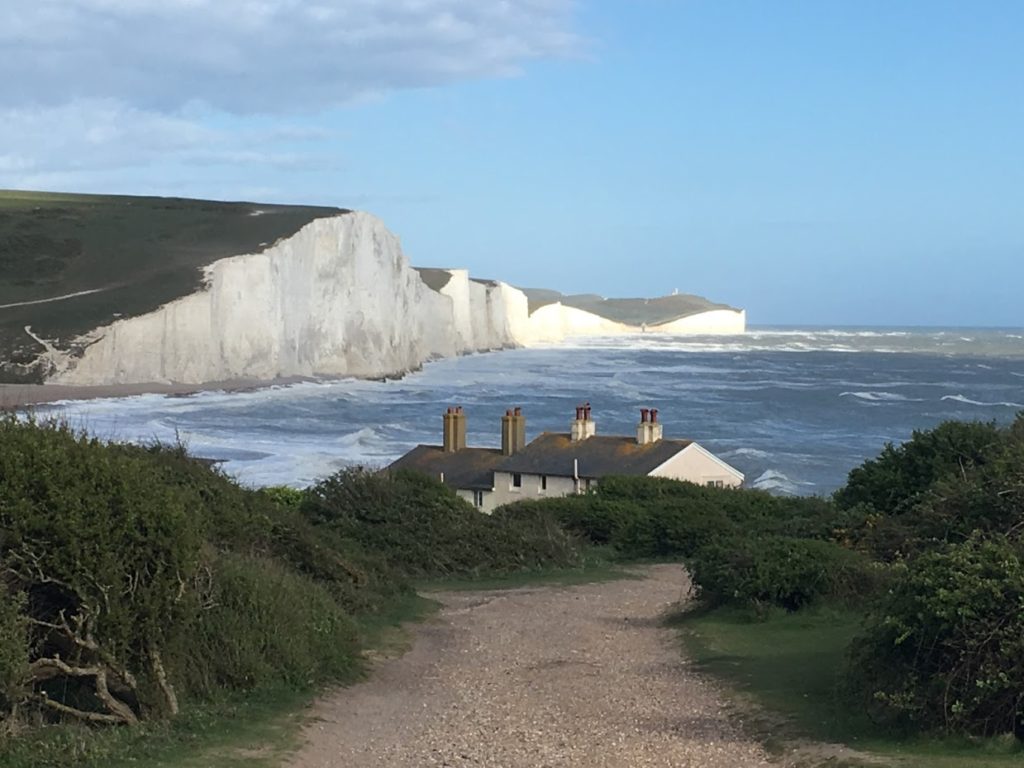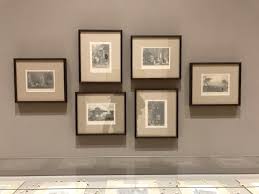This semester I worked with a Yale School of Art MFA student, Victoria Martinez, and the Wilson Branch Manager Luis Chavez-Brumell, to create a community art project. Learn more about it 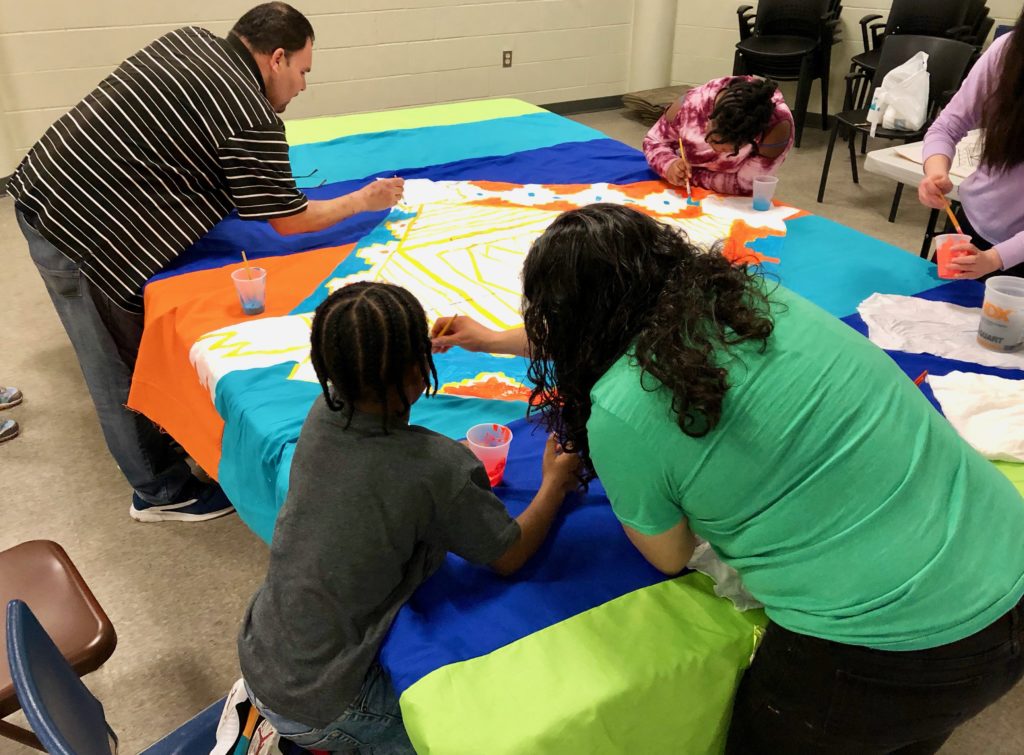
Author Archives: jennifer
Jerwood Gallery, Fairlight Hall, and the De La Warr Pavilion
Am starting to get a bit of that art-overload, mind-blur that starts creeping up when you’ve seen about three hundred artworks every day for the last four days. The visual information is starting to go in one eye and out the other — a very strange and confusing feeling. Places are starting to blur together and I’m having to reference my photos to remember what happened the morning before. It’s a fantastic though slightly disorienting feeling.
The overall message yesterday: Hastings is Happening! From the quite interesting show on John Carter at the Jerwood Gallery to the opulence of Fairlight Hall to the exquisitely art-deco-ey lines of the De La Warr Pavilion, Hastings has it all! I would absolutely come back — with the kids too! There are super cute parks and amusement centers all along this fish-y community.
Highlights included everything about Fairlight — including the rooftop view, kitchen gardens, incredible lunch with piano recital to follow, and the ART! Cai Guo-Chiang, John Everett Millais, and more!
Chichester Cathedral, Pallant House Gallery, and Goodwood House
I very much enjoyed this day of the trip, though after Charleston, which is so close to my heart, almost anything afterwards will have a slight tinge of not-Charleston-ness. The highlights of the day included a stained glass window by Marc Chagall, an incredibly beautiful and newly installed Edouard Vuillard painting, a scaled mock-up of a contemporary gallery with miniature paintings done by artist, and an excessively beautiful country home (Goodwood house – no photos allowed).
Charleston, Berwick, and the Ditchling Museum of Art & Craft
So just when I think that our visit to the Towner and Seven Sisters was the high point, we board the bus and head to Charleston House — now one of my favorite artists’ house in the world (second to Frida Kahlo’s blue house). Home of Vanessa Bell and Duncan Grant (among others of the Bloomsbury Group), this experience very much made me even more enamored with Bell (sister of Virginia Woolf). She is such a freakin’ rock star and totally underappreciated. The bit of research I did for the YCBA Audio Guide about Bell’s Design for Overmantel would have been totally changed after my visit to Charleston House. She and Duncan Grant covered almost every surface of the home in beautiful painted decorations and filled their home with art. It exudes from every pore in the house — and despite being quite old, it still feels alive. The gardens are spectacular and make me want to learn how to grow flowers and plants (though right now I pretty much kill everything including hearty succulents, so I have a long way to go). We had an incredibly fresh and well-prepared meal at Charleston before heading off to Berwick, which is the church whose interiors Duncan Grant and Vanessa Bell painted (of course).
After Berwick, we headed off for the Ditchling Museum of Art & Craft and had a very nice tour by one of the board members, Jenny. She came from a long line of weavers and grew up in the craft guild started by Eric Gill (of Gill Sans fame) nearby. The guild had a metal working shop, wood shop, weaving studio, and stone carving workshop. The whole place went out of fashion and closed in 1989 and all the work and history would have been unknown if not for the work of two local sisters (Joanna and Hilary Bourne) who had a vision to create the museum. Thank goodness for septuagenarians! They’re a small but mighty museums, and newly redesigned in 2013. It’s amazing how things can feel so old and modern at the same time — I’m really digging that about England.
The reluctant Anglophile heads off soon for more adventures today. Stay tuned.
Towner Art Gallery and Seven Sisters
I arrived yesterday into Heathrow and after a fairly speedy experience through passport control, hopped into a car and headed for the two-hour excursion to Eastbourne. I’m here again in England (after two weeks at home) for a fabulous docent trip through Sussex. We’re staying at the amazing Grand Hotel Eastbourne, and after just one night, it’s hard to imagine staying at any hotel with less than five stars (at least, when traveling for business!)
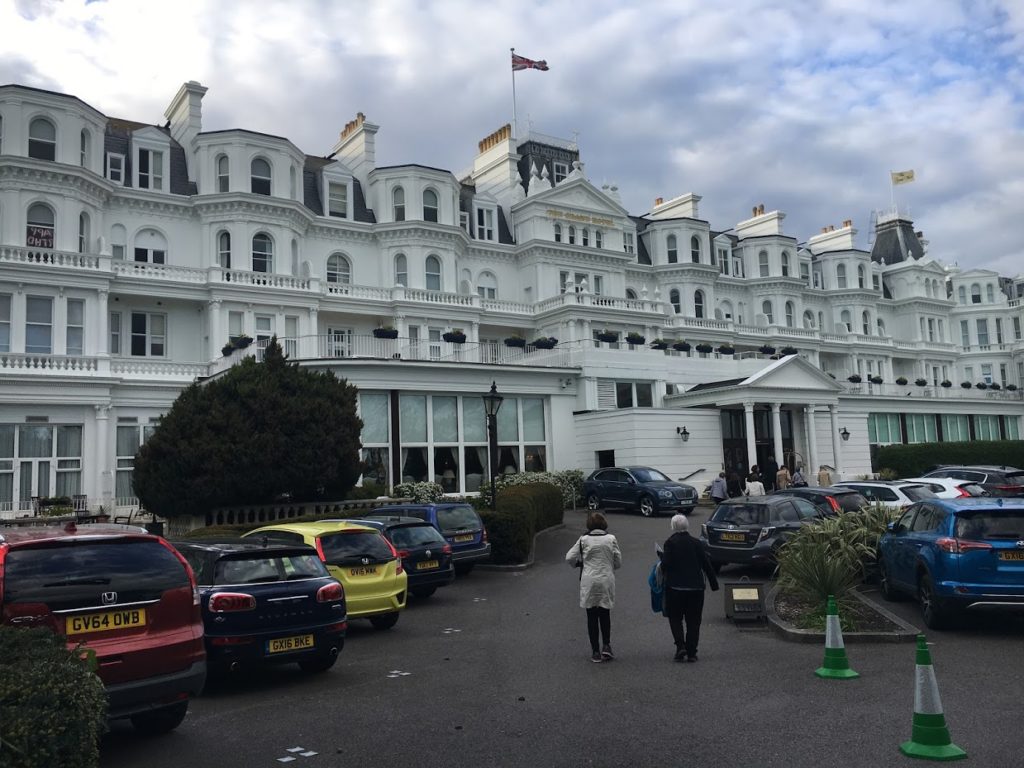
The Towner Art Gallery was a great way to start this week-long trip with our YCBA docents. They have a very robust educational program that is fully integrated into the museum — from the display of local K-12 student art in their Draw Me In exhibition to tours of storage for students, it’s all there. They have a rotating gallery space that the director, Joe Hill, told us he wants to be curated by artists, taxi drivers, and environmental activists from nearby Brighton. What a breath of fresh air!
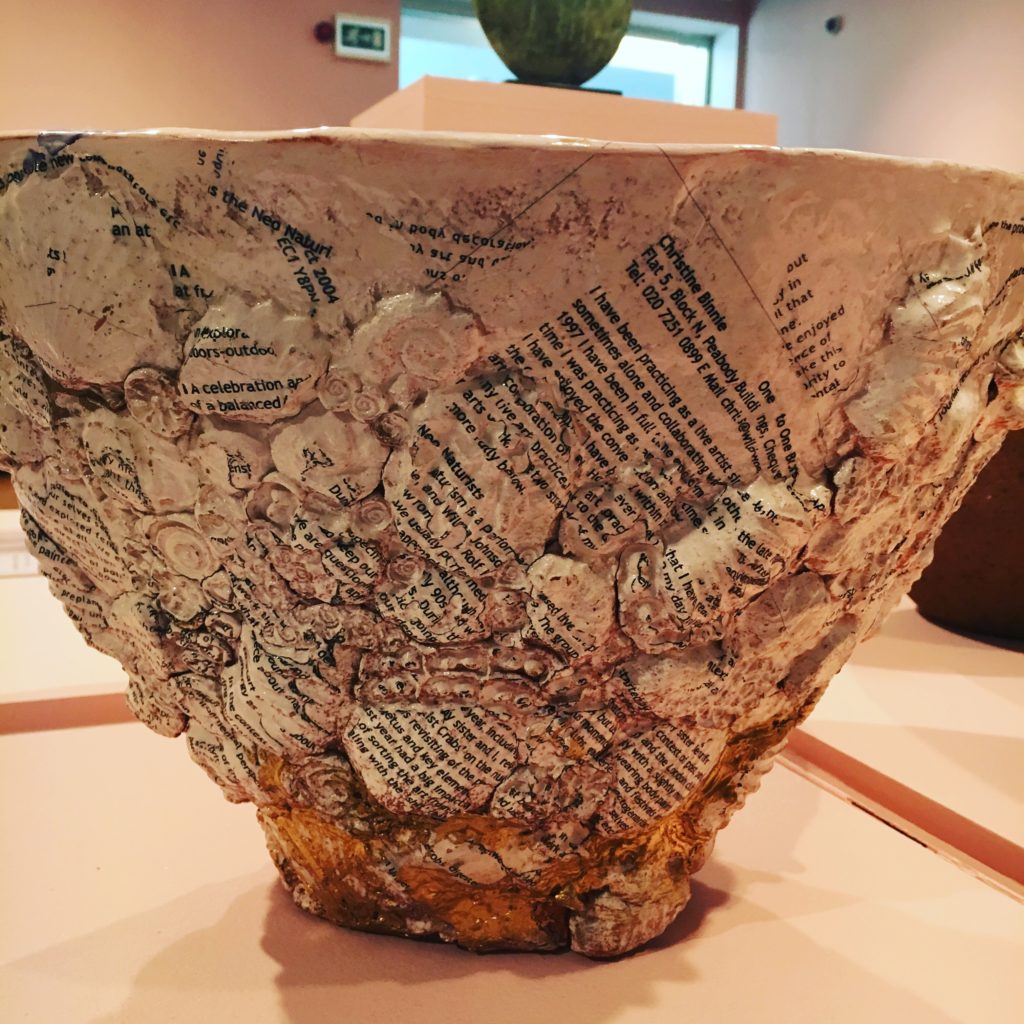
Christine Binnie 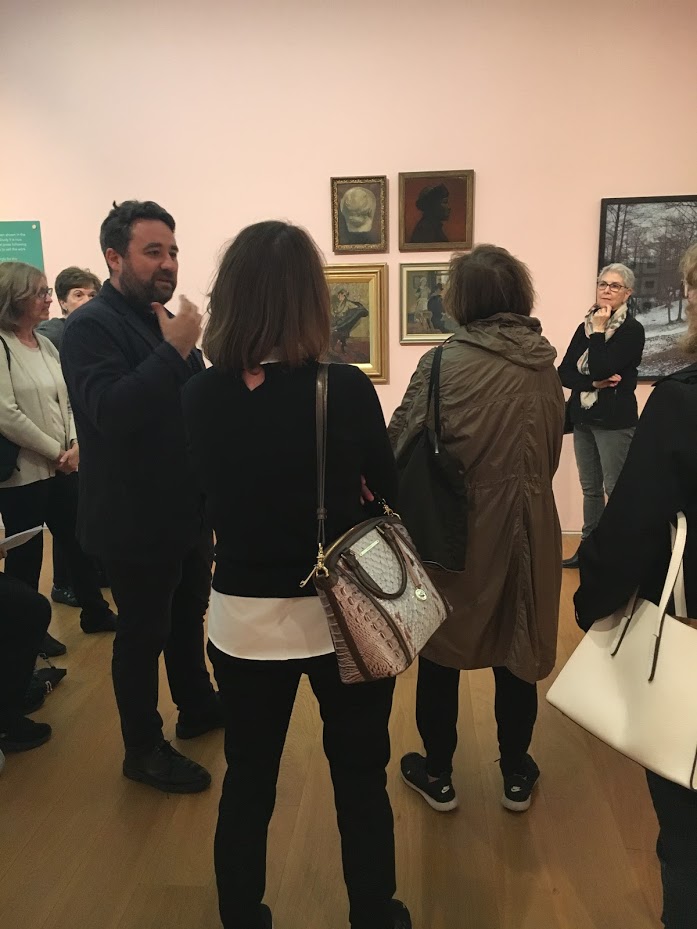
Joe Hill (left) 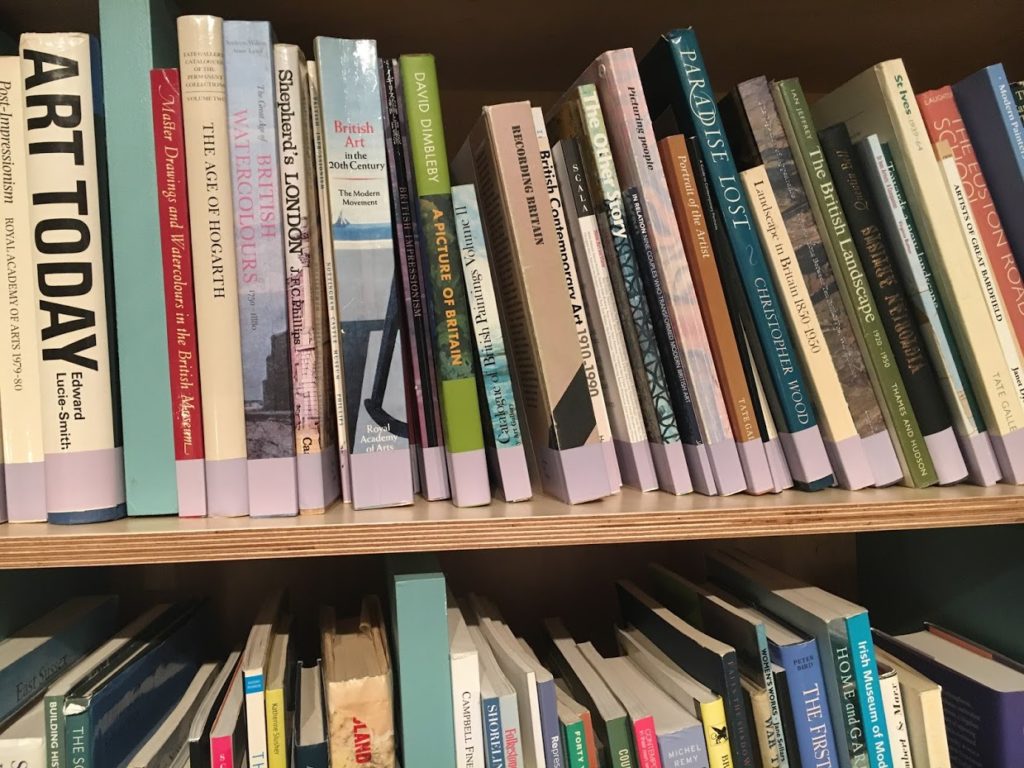
Publicly accessible curatorial library 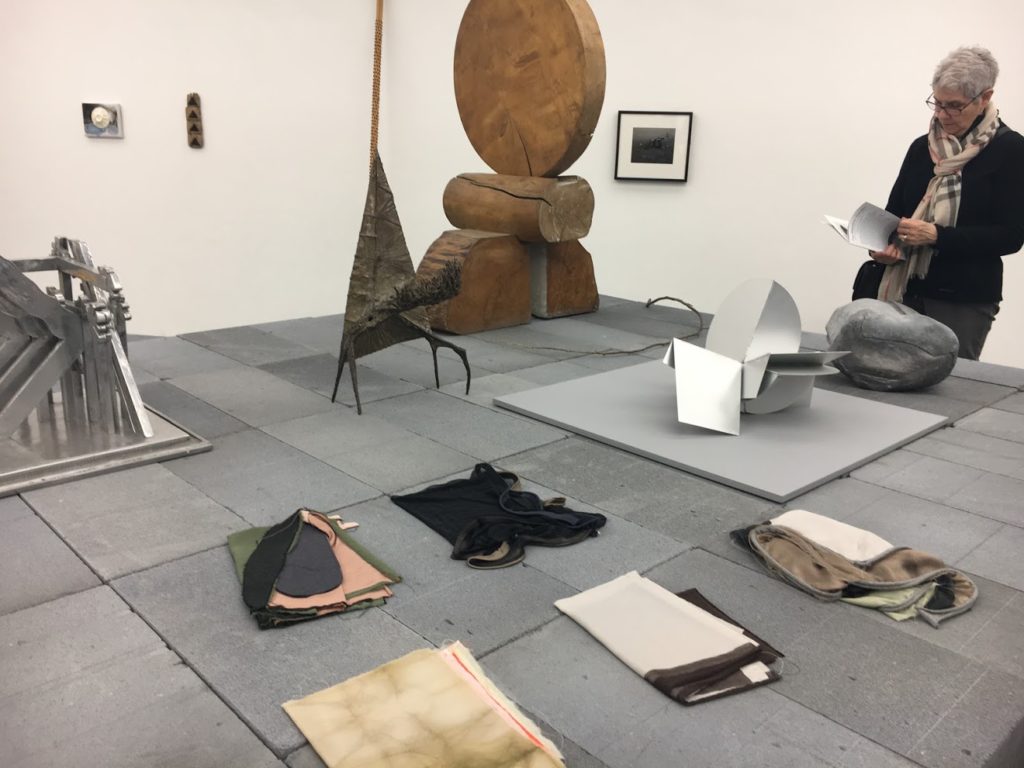
The Weather Garden exhibition 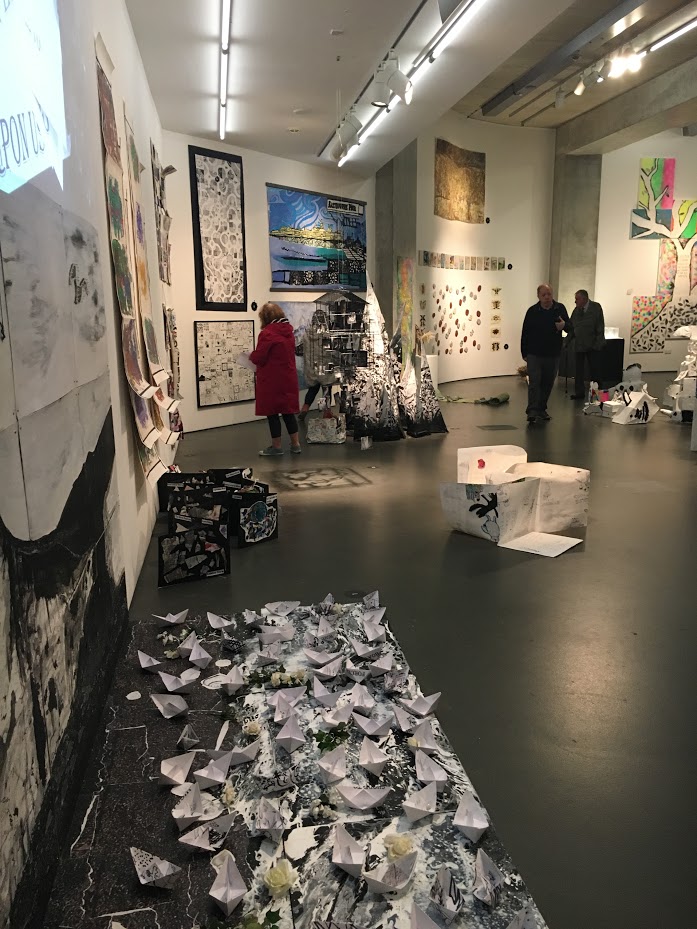
Draw Me In exhibition 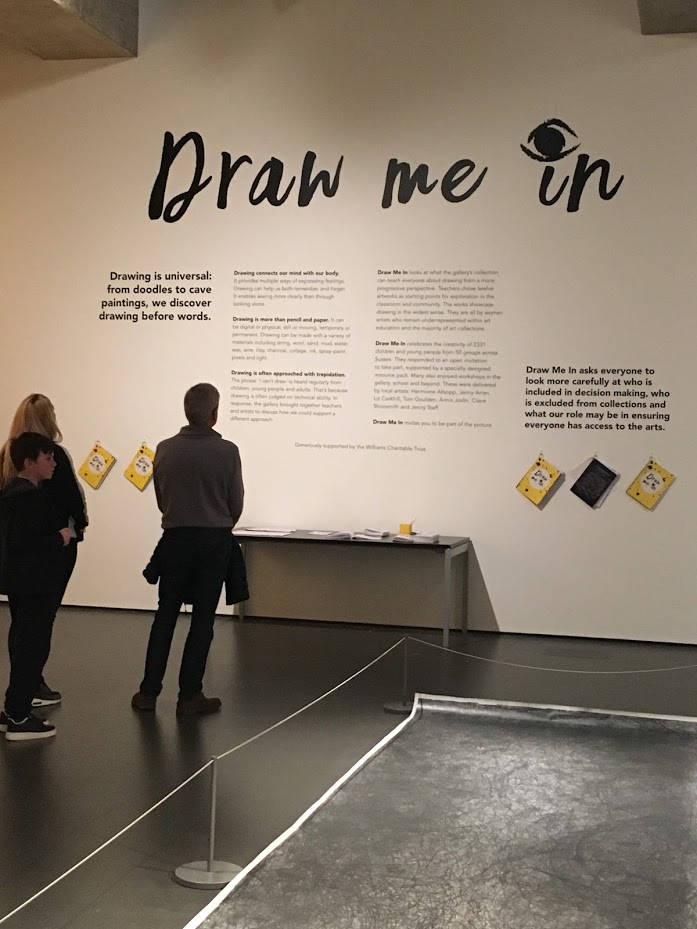
Fantastic 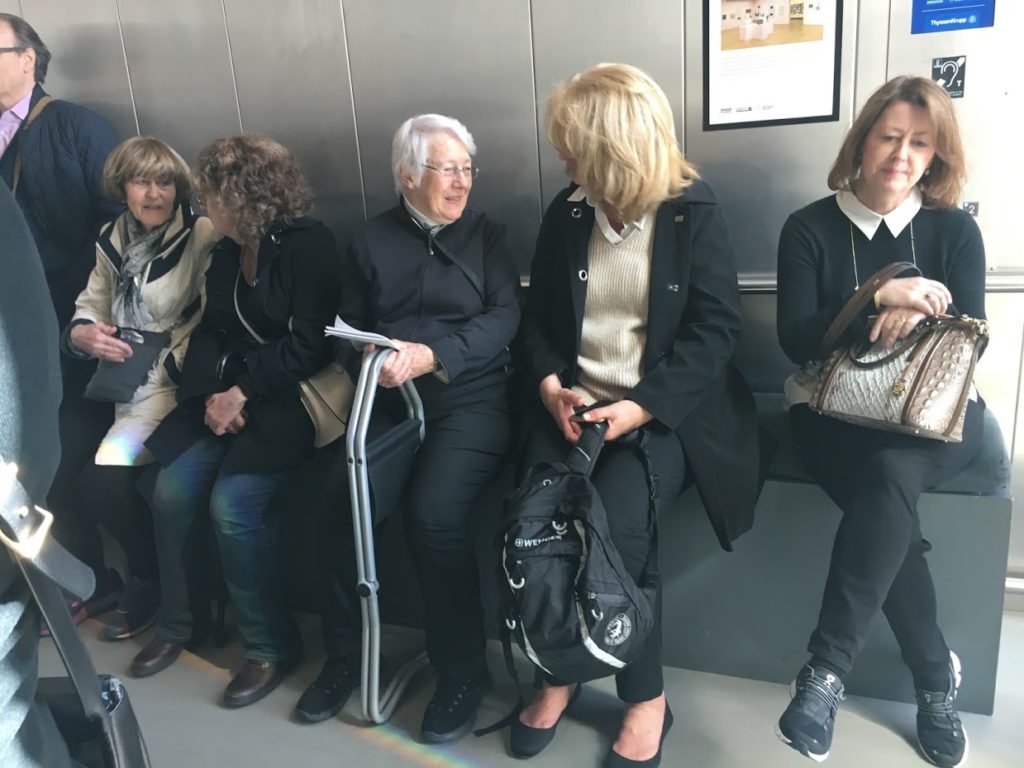
Seats in an elevator!
The entire bespoke building exudes creativity and accessibility, from the sensory room to the comfy benches in the elevators. Sure, we have a library. But they have a study space with books from curators’ individual libraries. Imagine both the general public and specialized curators reading the same books! There’s so much to appreciate and admire at the Towner Art Gallery, and I left feeling inspired and ready to take some of these ideas back to the YCBA.
After the Towner Art Gallery, we hopped in the bus for the trek to the Seven Sisters. There were sheep. There was wind. There were incredible vistas and pieces of wool flying around. Overall, a breathtaking (literally) experience.
Reluctant anglophile
Never in my wildest dreams (which must be pretty tame), did I ever think I would become a budding anglophile. For pretty much my whole life, I was told that England was “boring” by my father — the “Reynolds” of “Reynolds-Kaye” comes from him. Am not sure if this was some sort of rejection of his grandfather’s homeland or just a predilection for the warmer and more “exotic” climates of Southeast Asia and the Pacific Islands, but in the end, it meant that I really had very little interest in anything British.
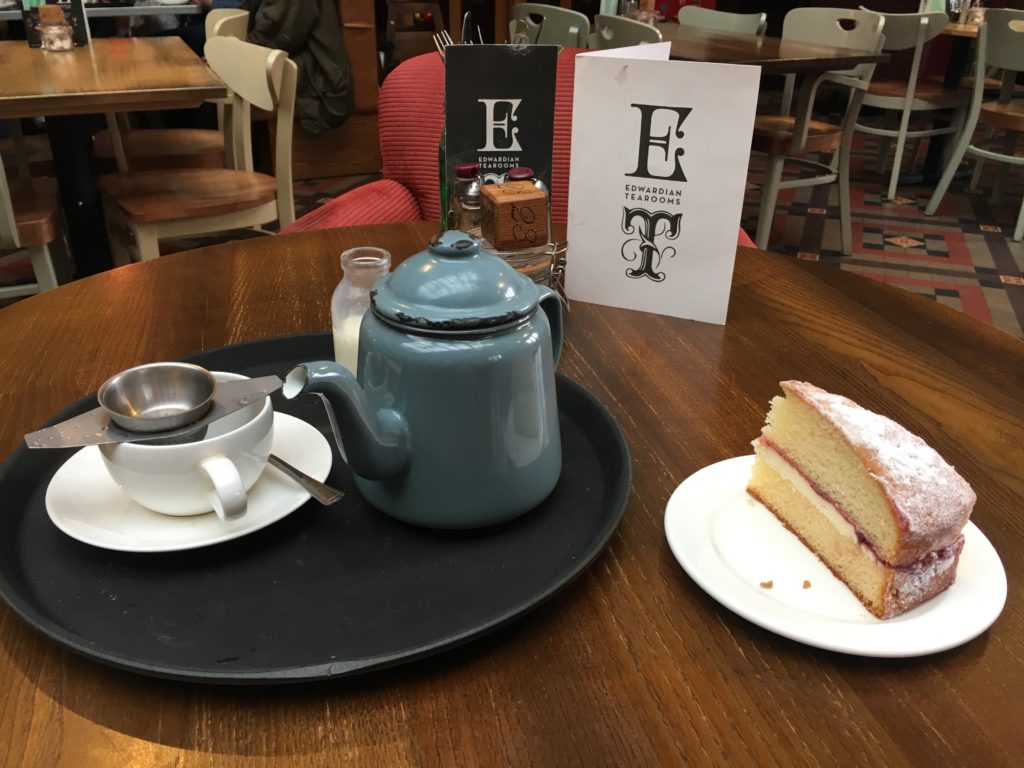
I was never one of those girls who read Jane Austen books and had the mildest infatuation with Prince William as a pre-teen. Shakespeare to me meant Leonardo DiCaprio as Romeo and even in college and graduate school, you never saw me in a British art history class — or, actually, they never offered that on the West Coast. As an adult, I did my best to become respectable and tried to get into Downton Abbey and the Great British Bake Off. I still associate fancy china, actual silverware, and brass knobbed wooden desks (like the one I’m writing on) as simply not for me.
Yet yesterday, I was seated at an extremely long table with white linen and silver candelabra with actual flames flickering off the tapered white ends of hand-poured candles. Eating off actual china with eight piece of differently sized forks, spoons, and knives in front of me. Along with our YCBA docents, I tucked into a two-hour three-course meal with decaf English Breakfast to top off a delicious meal.
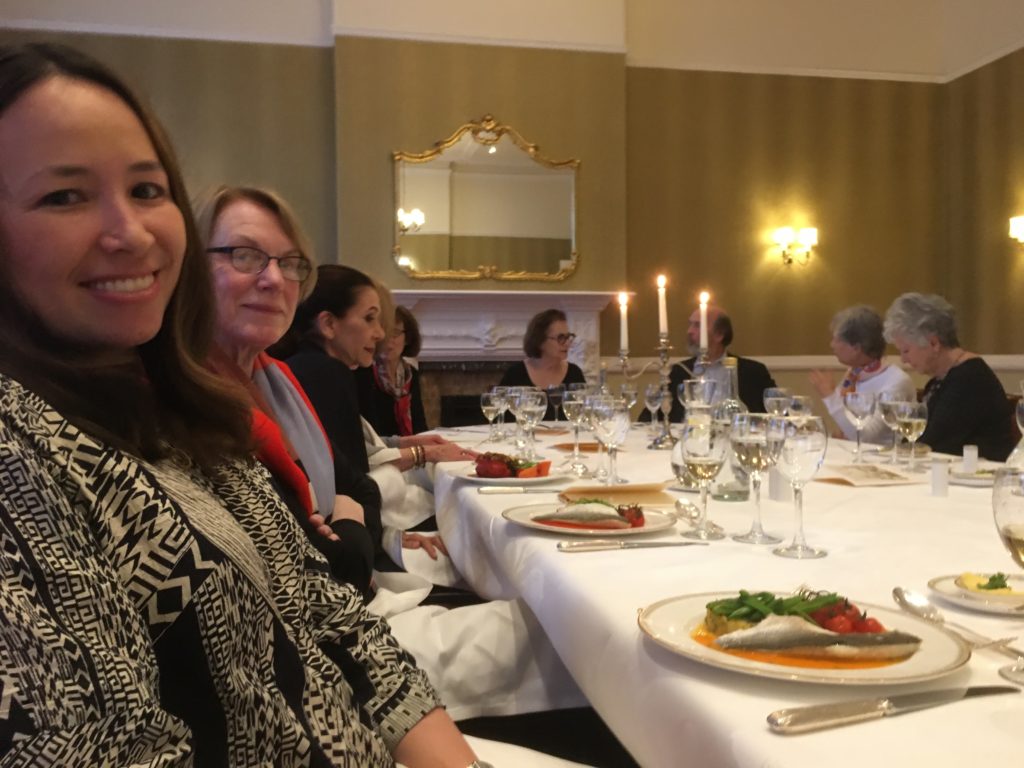
And the most shocking part of it all? I felt totally at home. If there’s one thing that working at the YCBA will do, it will be to turn you into a reluctant anglophile. Yes, I admit it. This California girl is embracing her British blood alongside the Japanese and French sides. Sure, “British” still doesn’t seem “exotic” to me, but at least it’s more comfortable than it was before. I’m learning to take joy in a good strong cuppa, embrace manage the awkward and overstated politeness, and appreciate British art — which, after all, was Paul Mellon’s goal to begin with.
Congratulations, Papa Mellon. You’ve done it. With me, at least.
AAH in Brighton
I’ve been in Brighton, England since Wednesday for the Association for Art History annual conference, and I have had the BEST time. What a great city! First of all, I found a small but cute hotel on the ocean — that was priority Number One. There’s no way that a California girl like myself could be this close to the ocean and not want to wake up to it every morning.
Brighton also has incredible shopping, especially in the form of cute boutiques like Covet where I discovered the Danish brand, Masai, and my favorite UK-based tea shop, Bird and Blend Tea. There’s even a LEGO store here, making souvenir shopping a breeze. I highly recommend Brighton, even if just as a day-trip from London.
The conference as a whole was a very rewarding experience. There’s nothing quite like flying across the Atlantic to deliver a paper on plaster casts of pre-Columbian art with a wonderful colleague. The panel “From Casting to Coding” was very much aligned with things I have been thinking about in my own work, and while I didn’t get (m)any questions, it was still totally worth it. The other panels were also really interesting, and the keynote speakers (Claire Bishop and Michael Rakowitz) were some of the best keynotes I’ve seen at a conference before.
It was also nice catching up with colleagues and feeling like part of the conversation. One of the best parts of working at the Center is that there are so many opportunities to travel to the UK, and I’m definitely spending more time here than I had ever imagined. Although I’m still far from calling myself an anglophile, I’m definitely starting to appreciate England and its history in ways I had never predicted. Am very grateful to be here, and excited for the next (very short) leg of the journey to Birmingham tomorrow.
Saturday morning routine
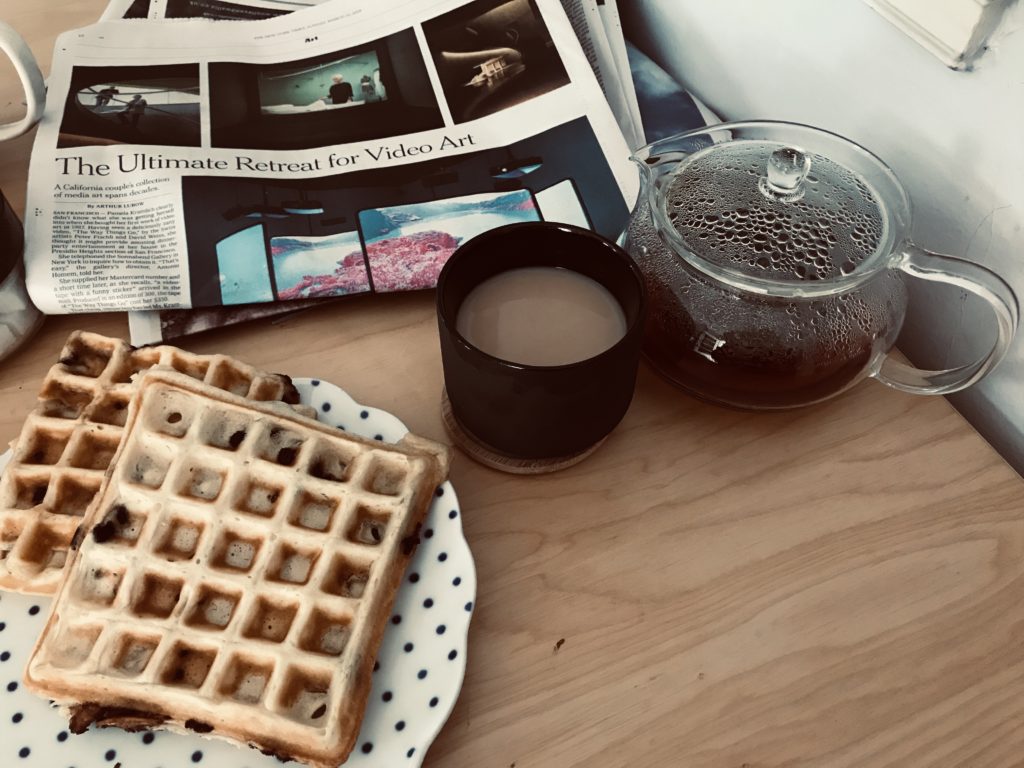
The work week is so scheduled — drop-offs, pick-ups,7 meetings a day – that on the weekends, it’s all about taking the time to loosen up, take it slow, and lose track of time. It means taking the time to make a pot of organic lavender earl grey, cook up some waffles with T, and actual read the paper. During the academic year, when every hour is accounted for, each email needs a response, it makes it even more critical to take time to unplug from Outlook and make time for myself and the family.
This was a tough week that required a lot of emotional connecting, empathy, perspective taking, and breathing. Where you spend most of your time, who you spend your time with, and what you spend time doing — these all weave into the daily fabric of a life. When people are struggling, when the mission goes awry, what is the most human way to respond? How do you align your moral and ethical beliefs with your work 100% of the time? Is it OK if it only aligns 80% of the time?
The saving grace of the week is an amazing class I’m auditing on Native North American Art. It’s a fantastic seminar with great reading assignments, fantastic guest speakers, and thought-provoking material. Most importantly, it’s a moment to heal and connect with and through indigenous art. It’s an anti-colonial space that reminds me of the other anti-colonial spaces that I sought out in graduate school. Demian Flores’s community art space in Oaxaca, La Curtiduria. The offices of Kaya Press and the people who publish cutting-edge literature from the Asian diaspora. Classes in American Studies and Ethnicity. The amazing female interlocutors I met at UCSD.
I’m longing for that type of unapologetic, brave, intersectional, soulful, healing, dynamic, un-self-conscious partnerships. Was inspired yesterday by the incredible work of Jami Powell, who I had the privilege of hearing in the seminar. Felt moved by the incredible work of Luciana McClure and Nasty Women Connecticut, who opened the show Complicit: Erasure of the Body last night to a huge attendance. Am inspired by these women and doing what I can within my own museum to breathe this kind of liberatory spirit into the work.
Talking about difficult topics in the museum

Fred Wilson: Afro Kismet at Pace Gallery
When we first moved to New Haven over 4 years ago, one of the recurring selling points was that it was “only an hour and a half from New York.” At the time, I didn’t think that was a very compelling reason to uproot my then 8-month old twin boys and our lives in San Diego, but over time, I’ve definitely seen it as a crucial benefit. The proximity of New York – New Haven has definitely made it possible for me to see shows at galleries and museum that I otherwise would not have been able to see. Some of my favorite memories of working at the Yale Art Gallery and the Yale Center for British Art have been the days out of the office with colleagues on day-trips to the NYC. Whether to network with new colleagues, check out British artists, hangout with our Yale-Smithsonian Bartels Intern at the NMAI, or present at conferences, I have had a ton of reasons to come to New York and great memories that I carry back with me on the Metro-North.
The summer is a great – though hot – time to come to NYC, and while most of the major exhibitions seem to have closed and galleries are on hiatus, there were two good reason to make the trek: Fred Wilson’s Afro Kismet at the Pace Gallery and John Akomfrah’s Signs of Empire at the New Museum. Am in between the two shows enjoying an Earl Grey and chocolate chip cookie at the New Museum, and haven’t had a chance to see the Akomfrah. The Fred Wilson show, however, was really, really cool. Fred Wilson has been a touchstone for me since I first learned about “Mining the Museum,” and his work has been a consistent reference point the way I think about art, institutional critique, and museums. When my boss, Linda, encouraged me to see the show, I took her up on the offer.
For me, there were two highlights:
(1) his juxtaposition between African objects and European oil paintings.This totally reminded me of both Pedro Lasch’s Black Mirror / Espejo Negro and Demian Flores’ Deconstruction of a Nation / Deconstruccion de una nacion, both of which I wrote about in a short e-misferica article, in which I actually mention Wilson. So I’m coming full circle here, 4 years later, in New York. I kept wondering why he chose to bring these specific African sculptures together with these European paintings – were they made at the same time? Did they have a similar visual register? Was there a geographic specificity to them? The exhibition text was sparse and I’m hoping the catalog will help me answer some of these questions.
(2) his overlay of parchment or wax paper so that the majority of the image was obscured except for the little ovals that highlighted the black figures in the image. I really enjoyed this subtle way of emphasizing the figure of African descent, as it emphasized the global reach and specifically Turkish context in which many Africans were visually registered. That said, they sometimes seemed very shadowy figures, and by not clearly viewing the context, it made it difficult to understand what role that figure had in the image. Were they always in a negative, downgraded position in servitude or in the shadows, or is there any counter-reading available that could see their very presence a form of acknowledgment and assertion. This is visible proof of their existence, and the very visual material that makes Wilson’s project possible.
This refocusing reminded me of Titus Kaphar’s Crumpled and Wrapped series, where he’s literally re-framing the canvas, often to emphasize the figure of African descent. As a New Haven-based artist, I’ve had the pleasure of meeting him and teaching from his works of art at the Yale Art Gallery. His work is incredibly meaningful, and he couldn’t be a nicer person.
I’ve finished my tea and cookie, so I should sign-off and check out the Akomfrah show before I have to get back on the Metro-North. Trying to pace myself by only seeing a few shows during each trip to New York, and staying hydrated, caffeinated, and full has definitely become a priority. Have also learned the value of taking taxis instead of the subway and packing light. On to the next adventure!
P.S. If you’re ever in New York, come to New Haven! It’s only an hour and a half away!

